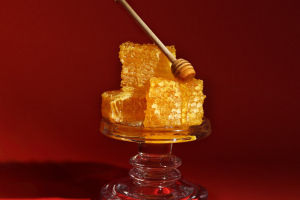When we think about cherries, many of us envision vibrant, red fruits that are both delicious and nutritious.
Cherries have been a favorite snack for centuries, and their variety and uses go far beyond what most people realize. Let’s take a deeper dive into the world of cherries!
What Are Cherries?
Cherries belong to the genus Prunus, which includes several species of trees and shrubs. While there are many different types, the most commonly known cherries are the European sweet cherry (which comes in red, yellow, and black varieties) and the European sour cherry. While the sweet cherry is enjoyed fresh, the sour cherry is typically used for cooking or making preserves. In many parts of the world, cherries are called "carriers" in different languages, and they are known for their rich, sweet flavors.
Types of Cherries
Within the Prunus genus, cherries can be divided into different subgroups. These include the typical cherry species under the Cerasus subgenus, such as the European sweet cherry and sour cherry, as well as the Chinese and Japanese varieties. Among these, the European sweet cherry is the most popular and commonly found in grocery stores worldwide. It’s renowned for its juicy flesh and delightful mix of sweet and slightly tart flavor.
Where Are Cherries Grown?
Cherries grow in temperate climates, meaning they thrive in regions that experience both warm summers and cold winters. In Europe, they are commonly cultivated in areas such as Spain, Italy, and France, while in North America, the United States is one of the largest producers of cherries, especially in states like Michigan and Washington.
In addition to Europe and North America, cherries are also widely grown in Asia, with varieties like the Chinese cherry being more common in Eastern markets. The cultivation process is delicate, as cherries are susceptible to damage from impacts, making harvesting a careful task. We should always look for cherries with deep color and fresh green stems when picking them in the store, as these factors often indicate the highest quality fruit.
Different Varieties and Their Uses
There are various types of cherries, each with its own unique characteristics. The most popular varieties are sweet cherries like Bing cherries and Rainier cherries, which are often enjoyed raw due to their sweet taste. Then, there are sour cherries such as Montmorency, which are often used in cooking or to make juices and preserves. Some varieties also include ornamental types, which are grown for their beautiful flowers, like those seen in Japan’s famous cherry blossoms. These ornamental types, however, do not produce edible fruit.
Cherries in Cooking
Cherries are incredibly versatile in the kitchen. Sweet cherries are perfect for eating fresh or using in desserts such as pies, tarts, and jams. Sour cherries are better suited for making savory dishes, sauces, or even beverages like cherry juice or fruit drinks. Because of their natural acidity, sour cherries balance out the sweetness in many recipes, making them a staple ingredient in many kitchens.
Health Benefits of Cherries
Apart from being delicious, cherries are also packed with nutrients. They are high in vitamins A and C, which are essential for maintaining healthy skin and immune function. Cherries also contain potassium, which is great for heart health, and antioxidants, which help protect our cells from damage. Recent studies even suggest that cherries may help reduce inflammation and promote better sleep, making them a great addition to our daily diet.
How to Pick the Best Cherries
Picking the best cherries at the store involves a bit of attention to detail. Look for cherries with a deep color, preferably bright red or dark purple, depending on the variety. The fruit should be firm and not too soft, as this could indicate over-ripeness. Fresh stems are also a good sign that the fruit has been properly handled and is fresh. Always try to avoid cherries with wrinkles or signs of bruising, as these indicate that the fruit has been damaged.
Fun Facts About Cherries
Did you know that cherries are one of the earliest fruits to ripen in the spring? This makes them a delightful addition to seasonal meals. Also, cherries have been part of cultures around the world for centuries. In Japan, the blooming of cherry trees (sakura) is a highly anticipated event, and it symbolizes renewal and the beauty of nature. Cherries, in their various forms, are enjoyed in different cultures for both their beauty and taste.
Final Thoughts
Cherries are far more than just a sweet snack. With their various types, impressive health benefits, and rich history, they bring a unique burst of flavor to our lives. From adding a dash of sweetness to our favorite dishes to offering essential nutrients, cherries truly pack a punch.
Next time you grab a handful, take a moment to appreciate the depth behind each cherry. The perfect balance of sweet and tart, along with their numerous benefits, make them a fruit worth savoring every time!
How to Grow Cherry Trees in Container Produce More Fruit
Video by Evelyn Perfect


